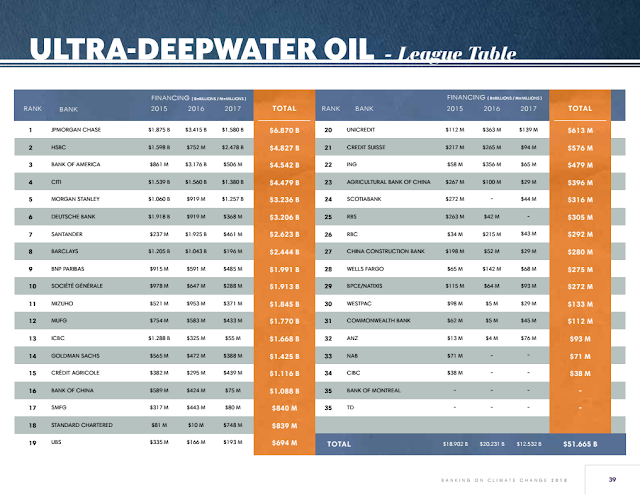Alaska
Native rights and Indigenous sovereignty cannot be separated from the problem
of extreme oil and gas production in Alaska. Politicians and oil interests have
a long history of pushing legislation nullifying Alaska Native land claims,
especially those claims that stood in the way of oil and pipeline development.
After being declared a state in 1958, Alaska selected for
oil development tracts of land on the North Slope, in an area called Prudhoe
Bay. Without consultation and consent of the local Inupiat village, but with
approval of the U.S. Bureau of Land Management, these lands were transferred to
the state.
In 1964, the state leased some of these tracts to oil
companies, and in 1968, oil was discovered at Prudhoe Bay.100 The oil boom
forever altered the ecosystem and the life of the Inupiat people, including by
contributing to climate change through the release of carbon from oil sent from
the North Slope to refneries. This all led to the building of the 800-mile
Trans-Alaska pipeline across the state that further trampled over the rights of
Inupiat peoples and Alaska Native land rights at large.
The Alaska Native Claims Settlement Act (ANCSA) was
passedin 1971, over opposition from the Inupiat. ANCSA took land from
jurisdictional control of Alaska Natives, allowing the petroleum industry and
State of Alaska to gain access to oil reserves. Native Alaskans are once again
confronted with oil and gas expansion under the Trump administration, with
potential oil drilling in the Alaska Outer Continental Shelf (OCS) and opening
of the Alaska National Wildlife Refuge (ANWR) to oil and gas development.
In April 2017, Trump signed an executive order lifting a
ban on oil exploration in the coastal seas of Alaska. The U.S. government is
now proposing 19 offshore lease sales in
the Chukchi Sea, the Beaufort Sea, Cook Inlet, and other areas. Any oil spills
in these Arctic waters would be catastrophic for bowhead whales, seals, polar
bears, and other marine mammals and would directly affect the Alaska Natives’subsistence culture and way of life.106 Spills
or drilling disasters would mean high-risk cleanup challenged by ice cover,
subzero temperatures, and harsh weather conditions. There is no proven way to
clean sea ice of oil from potential spills.
The U.S. Republican tax overhaul law passed in December
2017 included a provision requiring two oil and gas lease sales in thecoastal
plains area of the ANWR over the next 10 years.
ANWR is one of the world’s most pristine and beautiful
ecosystems, with landscapes and wildlife that demand the strongest protection.
The Refuge is home to porcupine caribou, muskoxen, moose, Arctic fox, lynx,
wolves, and polar bears, brown bears, and black bears, and is a stopping point
for nearly 200 species of migratory birds. For Alaska Natives, such as the
Gwich’in Athabascan peoples, protecting the Refuge and the caribou they depend
on is a matter of human rights and the collective right of Indigenous peoples —
as well as a critical matter of survival. In opposing Arctic oil drilling, they
are fghting for their rights and the rights of the porcupine caribou, whose
calving grounds are within the coastal plain of the Refuge. The Gwich’in call these
caribou calving grounds Iizhik Gwats’an Gwnadaii Goodlit: “the sacred place
where life begins.” The Gwich’in have followed the caribou herd across the
lands of this protected Refuge for thousands of years. They are rightfully
concerned that seismic exploration and drilling for oil in the Refuge will have
disastrous effects on the delicate
web of life in these sacred lands. Oil and gas expansion in ANWR would carve up
the Refuge with roads and industrial infrastructure, fragmenting otherwise
pristine habitat and exposing the fragile tundra and wildlife to toxic
chemicals, oil spills, and gas leaks.
Alaska Native Peoples and the fragile Arctic ecosystem have
yet to fully recover from the disastrous 1989 Exxon Valdez terminal oil spill.
It killed thousands of animals, severely affecting the local food chain as well as the food security and
sovereignty of Alaska Natives. Another spill would have a catastrophic effect on what remains of Alaska’s pristine ecosystem and the way of life
of its peoples.
Moreover, expansion of oil and gas development in Alaska
will lead to an increase in global greenhouse gas emissions. Climate change is
already a stark reality in the Alaska Arctic ecosystem. The average air
temperature in the Arctic is warming twice as fast as the global average.
Coastal villages are experiencing the melting of permafrost, which in turn
triggers huge seasonal surges in CO2 emissions and coastal erosion.
Ice cover in the coastal waters is decreasing, making it more difcult to obtain
the seafood that sustains local Indigenous peoples. Inland, porcupine caribou
migration routes are changing, threatening Gwich’in hunters that rely on the
caribou.
Expansion of oil and gas development in Alaska is an
assault against the Alaska Natives who are defending the territorial integrity
of Mother Earth and Father Sky, and the rights of their future generations.
Bank fnancing of the expansion of extreme fossil fuels in Alaska perpetuates a
long history of violations of the human rights and collective rights of the Indigenouspeoples
of Alaska.
DOWNLOAD E-BOOK CLICK HERE
DOWNLOAD E-BOOK CLICK HERE



No comments:
Post a Comment